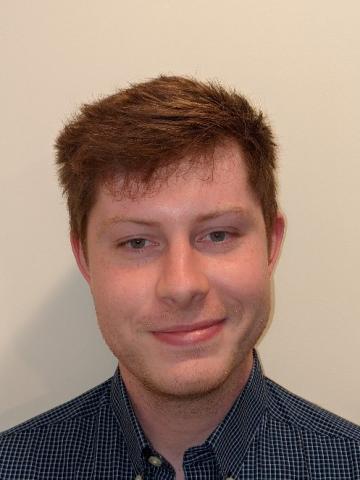The Story Behind a Success
As the winners of the Student Paper Competition at the 2021 IEEE Radar Conference, we are honored to share this success story with the AESS community. We’d like the thank the organizing committees for the conference and student paper competition for enabling us to present the work virtually to a group of esteemed judges amidst the uncertainty of a global pandemic. It is truly inspiring how the strong leadership of the radar community has handled these unprecedented challenges.

I was honored to be selected as one of the top student papers at the 2021 IEEE Radar Conference. I currently am a Ph.D. student at the University of Kansas (KU) where my research emphasis is radar signal processing and waveform diversity in the context of exploring the capabilities of modern hardware. Specifically, arbitrary waveform generation has greatly expanded the breadth of radar operation through greater design degrees of freedom. That said, translation of novel theoretical ideas into hardware operation is an ongoing effort since uncertainties within physical systems can degrade model fidelity and the computational burden of processing the available dimensionality can be exceedingly expensive. In the paper “Computationally Efficient Joint-Domain Clutter Cancellation for Waveform-Agile Radar” we explored a clutter cancellation approach for waveform-diverse operation in which the emissions varied on a pulse-to-pulse basis. A direct implementation of the optimal solution quickly becomes impractical due to the multiplicative dimensionality arising from coupling the range (fast-time) and Doppler (slow-time) domains. However, using open air experimental measurements we demonstrated that an iterative approximate solution provides near optimal performance for a much lower computational burden (5 orders of magnitude for case considered in the paper). Exploration of this trade-space between optimal and practical is where I hope to further contribute to the development of radar operation.
This work would not have been possible without the incredible support of the members of the Radar Systems Lab (RSL) at KU as well as my mentors at Systems and Technology Research (STR) and the Naval Research Laboratory (NRL). Their aid goes far beyond that of the scope of this paper, and they are a key factor in my development as a research engineer. I am truly fortunate to have access to their insight and knowledge.

The open-air collect at the University of Kansas used for the paper.

I was extremely honored to have my work selected as one of the top three student papers at the 2021 IEEE Radar Conference. It is an accomplishment I achieved with the enduring support and invaluable expertise of my supervisors, Dr Mike Antoniou and Prof. Christopher John Baker, who, push me to give my best in everything I do. Hence, I would like to express my sincere gratitude to them first. I also would like to thank all the members of the Microwave Integrated System Laboratory group for creating an active and stimulating research environment. It is a pleasure for me to be part of this group of great people pushing the boundaries of the cutting-edge within radar technology. Working in such an environment helped and encouraged me to come up with new ideas to achieve my goals. Last but not least, I would like to express my special thanks to Muge Bekar who is my wife, friend and colleague for supporting and believing in me. Endless discussions and brainstorms with her led me to focus on solutions instead of problems.
Our paper "High-Resolution Drone-Borne SAR Using Off-the-Shelf High-Frequency Radars" examines the major drone-borne-SAR system characteristics, shows the importance of motion errors and presents an image formation algorithm tested through real-world experiments. It is our belief that drone-borne SAR will be soon used for many applications ranging from infrastructure monitoring to public security. Seeing my work receive recognition in such a top conference is a great source of motivation for going forward with my research.


It was a great honor for me to be selected as a finalist for the 2021 IEEE Radar Conference student paper competition. I won the 3rd place in the competition for my paper titled as ‘Multi-Frequency RF Sensors Data Adaptation for Motion recognition using Multi-modal Deep learning’. It’s always great to be recognized for the novel works.
I’m a senior year PhD student at the University of Alabama, Tuscaloosa; working at Computational Intelligence for RADAR (CI4R) lab. My research is focused on ‘Artificial Intelligence in RF sensing for Human Centric Smart Environment Design. This includes developing novel neural network architectures and training methodologies that incorporate physical sensor and target models for improved classification accuracy, robustness, and reduced computational complexity.
One of the fundamental research challenges in RF sensing is the lack of sufficient training data. To achieve state-of-the-art recognition performance for human motion classification in an indoor environment under low support samples, we proposed using Multi-Frequency RF sensors data to train a Multi-modal fusion network through a two-steps training process, in this award-winning conference paper. The significance of this work is that it can take input of different modalities (Video data, text, Wearable sensors data, Wi-fi data) along with radar data and can provide higher classification performance.
I want to give credit to my advisor Dr. Sevgi Z. Gurbuz for her enormous support during this work. Also, thanks to my wonderful lab-mate Emre Kurtoglu for his time to help me collecting the dataset.

The Multi-Frequency RF sensor network at UA CI4R lab.
